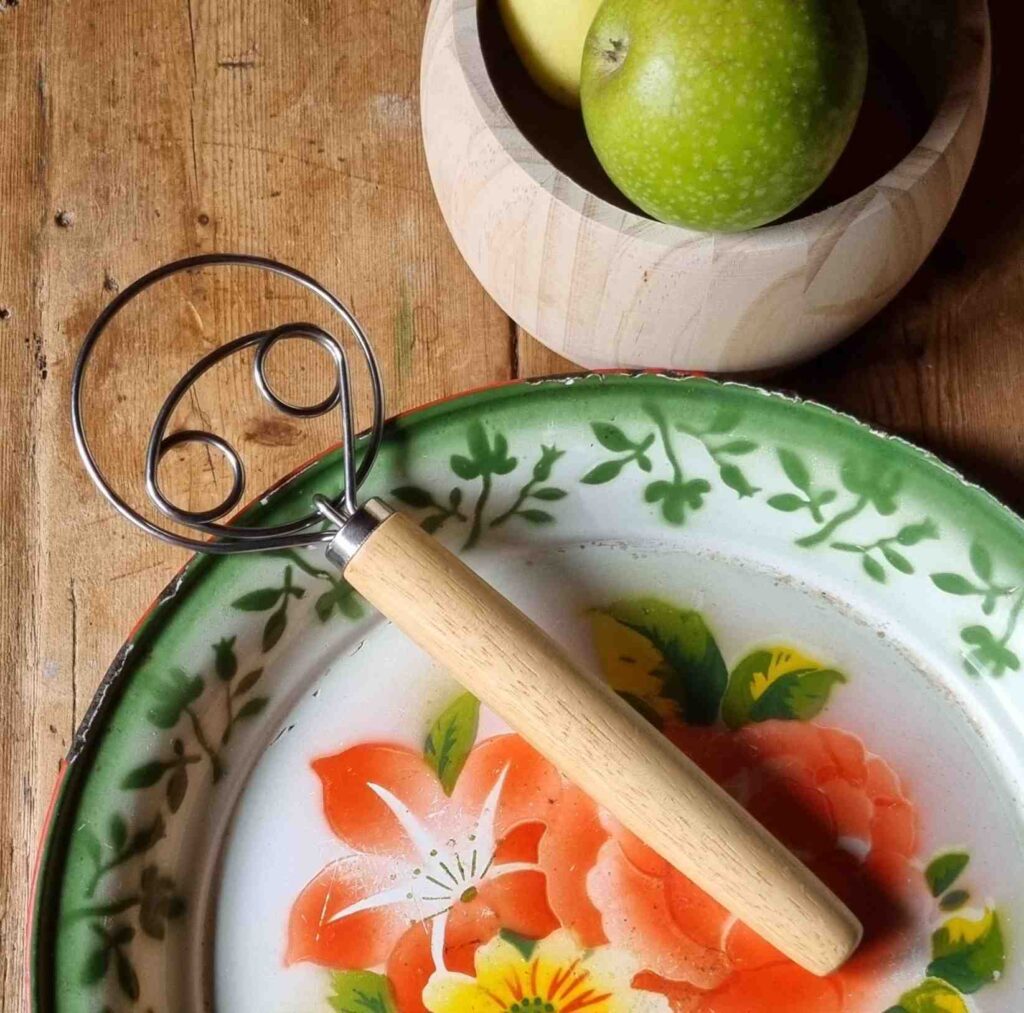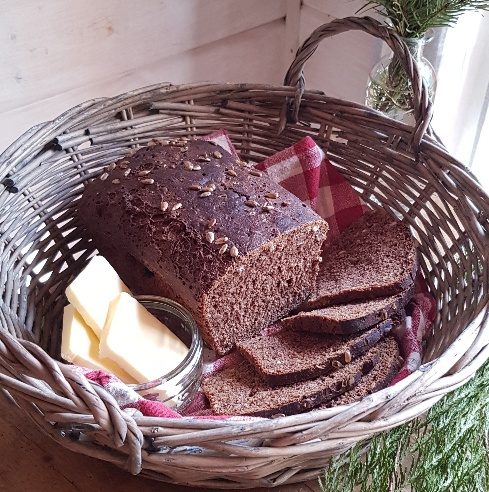Scandinavian rye bread is a terribly more-ish loaf; high in protein, dense and with a tightly packed crumb, it is well-suited to the elaborate open sandwich toppings favoured by Danes, accompanied by an ice old glass of aquavit. Many recipes call for a sour-dough starter, but as it is rare that I can think four to six days ahead to create the necessary starter, this overnight rye bread recipe is a favourite. As there is very little gluten content in rye, it doesn’t have to be kneaded like white breads, and just requires a thorough mixing at the start. This can either be done by hand (if you are feeling energetic), otherwise five minutes in a stand mixer with a dough hook attachment will do the trick nicely.
The great thing about this bread is that you don’t have to hang about all day while it proves; simply mix up a batch while you are pottering about in the kitchen in the evening and then you can bake it the next morning. Purists will tell you that rye bread needs to be left to rest for 5-6 hours before slicing and serving, but I have yet to manage this.
Ingredients (enough to make 1 loaf, filling a 900ml loaf tin)
250g rye flour
250g strong white flour
350ml water, warm to the touch
50g sunflower seeds
2tbsp melted butter or vegetable oil
1tbsp black treacle
1tbsp muscovado sugar
1tbsp cocoa
2tsp caraway seeds
1 ½ tsp salt
½ tsp dried fast-action yeast
Sunflower seeds or oats, to sprinkle on top
- Place the rye and strong flour in a large bowl and add the sugar, salt, seeds, caraway, yeast and salt.
- Make a well in the centre and add the oil and treacle (if you measure the oil out first and then use the same spoon for the treacle, it will slide off much more easily).
- Pour in the warm water and mix thoroughly to combine; the resulting dough will be soft and slightly sticky, and much rougher than a traditional white bread dough.
- Cover the bowl with a piece of oiled cling film and leave overnight to prove for 14-16 hours.
- In the morning the dough should have risen and will have a puffy appearance. Grease a 900ml loaf tin and dust the bottom with a little rye flour. Scrape the dough into the tin, pushing it carefully into the corners, then smooth the top down with wet fingers. Sprinkle on a few more seeds or some porridge oats if you fancy.
- Leave for another 1-2 hours to rise; the loaf will puff up slightly but don’t expect anything dramatic. A fingertip poked in gently should result in a dip which holds its shape.
- Preheat the oven to 180 degrees centigrade and bake on the centre shelf for 40-45 minutes; if you tip it out of the tin and rap on the bottom it should sound vaguely hollow.
- Leave to cool before serving with a thick smear of butter, an artful draping of smoked salmon and a sprinkling of dill. (Thickly buttered bread is known as tandsmør (tooth-butter), which means it is so thickly applied it shows teeth marks when bitten).

Danish dough whisk (brodpisker)
Our new kitchen hero just arrived, in the form of the Danish dough whisk (also sometimes called a brodpisker, which translates to “bread whipper” in Danish)!
Here’s why this oddly-shaped tool will become your new best friend in the kitchen:
- Conquering Dough:…





